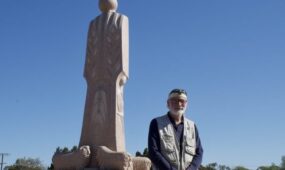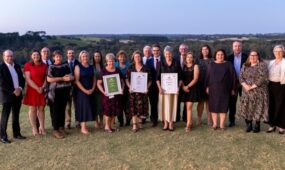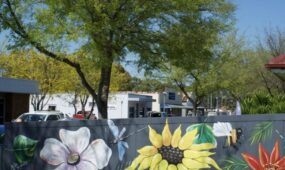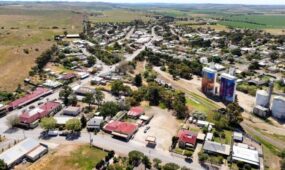BioR bringing biodiversity back to Mount Lofty Ranges
Regional
Over the past two weekends, volunteers from around the state have donned work boots and gotten their hands dirty to plant 22,000 trees at Frahns Farm in Monarto.

Sign up to receive notifications about new stories in this category.
Thank you for subscribing to story notifications.
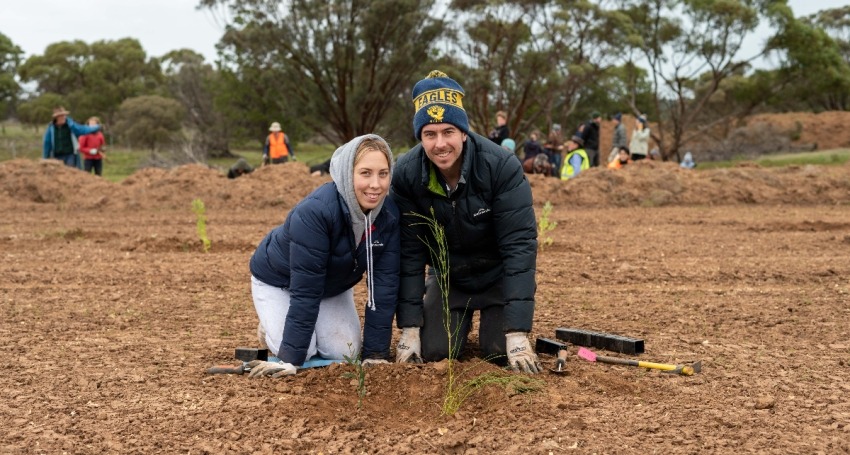
Frahns Farm is an initiative of BioR, a South Australian conservation group restoring biodiversity to the state, reconstructing wild habitats and safeguarding local flora and fauna.
The initiative is re-establishing biodiversity in the Mount Lofty Ranges, the Fleurieu Peninsula and Kangaroo Island.
Bradley Bianco, a flora ecologist with BioR, said the Ranges are one of 15 biodiversity hotspots in Australia.
“Frahns Farm is public land that is managed by the National Parks and Wildlife Service and BioR has a memorandum of understanding to conduct ecological restoration on the property,” Bianco said.
“There are exceptionally high levels of biodiversity and endemism – meaning plants and animals that are only found in the particular area – which makes this region quite special, however, it is also a heavily cleared landscape.”

Land prepared for planting. Photo: supplied.
Bianco said there is about 10 per cent of the former vegetation still present, meaning over 90 per cent has been cleared for agriculture and housing.
“Local wildlife, especially birds, have such limited habitat left and already 10 species of woodland birds have gone extinct in this region and about 50 more are flagged for extinction unless we replace their habitat in the next century,” he said.
“So that’s what we are doing; we are restoring and reconstructing that habitat.”
One way BioR achieves this is by hosting an annual Planting Festival asking South Australians to volunteer their time to plant tube stock and direct seed in prepared land.
“We get so much negative media about the biodiversity crisis and climate change and it can feel like you can’t do anything, but that’s not true – you can,” said Bianco.
“On an average planting festival weekend, you’ll come out and socialise with a bunch of like-minded people, have a cup of coffee or tea and some lunch, hear a small talk about why we are doing this and why it is important and then you’ll spend the next few hours planting trees and shrubs and other things.
“I really want to emphasise the community aspect of it as well – you’re out here planting in a community setting with a shared vision and it is a great opportunity to connect with people who also value biodiversity and the outdoors.
“You can actually see your impact as the plantings are starting to take on a really strong visual presence in the landscape.
“My daughter is two and she has got an entire cohort of trees that are her age exactly so she will be able to watch those grow with her.”
BioR’s managing director, David Paton said the annual Planting Festival is one of the initiatives in BioR’s five-year strategic plan which aims to increase the native habitat from its current 10 per cent to 30 per cent in line with the United Nation’s call for all countries to dedicate 30 per cent of land to biodiversity.
“To reach our long-term goal, BioR needs to increase the area of cleared land on which woodland habitat is being re-established at a rate of 20 per cent per annum for the next 25 to 30 years, and then to maintain that level of output for the next 50 years,” Paton said.
He said BioR is aiming to restore 50 hectares a year by 2028, 200 hectares a year by 2032 and at least 1000 hectares a year by 2045.
“An important component of delivering this program over the next 5 years and over the 75-year lifespan of the restoration works is growing the level of engagement of South Australians in the program.”

A Scarlet Robin. Photo: Tom Hunt.
Bianco emphasised that there is a unique window in time to be able to make a significant change.
“It wouldn’t have been done in the 80s because there wasn’t the science or the public recognition that this is something we should be worrying about, and if we wait another 20 or 30 years it will be too late and we just won’t have the time,” he said.
“I have always felt perversely lucky that I have been able to work at this time where the work that I do actually has an impact. We should acknowledge and capitalise on this time – if we don’t do this now, it might be too late.
“We have 100 unique woodland species, 10 of which are already extinct and 50 which are threatened with extinction in the near future, and I would rather that not be the case.
“I would rather my daughter be able to take her binoculars out and see Diamond Firetails and Scarlet Robins and Southern Whitefaces and all the other cool birds that we are lucky enough to see here now.”
The not-for-profit is seeking volunteers, investments and land donations to help execute its strategic plan. You can sign up for BioR’s volunteer days here.
Jump to next article

